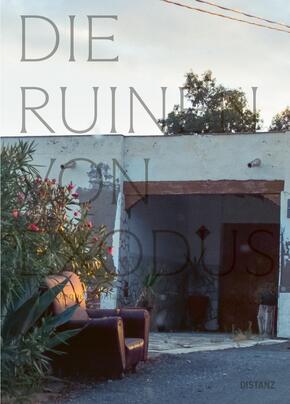| Verlag | Distanz Verlag |
| Auflage | 2024 |
| Seiten | 178 |
| Format | 16,7 x 1,5 x 23,2 cm |
| Gewicht | 456 g |
| ISBN-10 | 3954766272 |
| ISBN-13 | 9783954766277 |
| Bestell-Nr | 95476627A |
Die Landschaft als Leinwand. Ruinen der Filmindustrie und der Versuch, einem Ort zu begegnen.
Der Fotograf Michael Disqué und der Autor Roman Ehrlich reisten für ihr drittes gemeinsames Buch in die Wüste Tabernas in Andalusien. Sie fanden dort Wild West-Erlebnisdörfer und die Ruinen alter Filmsets vor, die Regisseure wie Sergio Leone für die Inszenierung ihrer Westernfilme in der spanischen Provinz errichten ließen. Weil die eigene Geschichte der Tabernaswüste kaum sichtbare Spuren im Sand zwischen den Sträuchern hinterlassen hat, eignet sie sich besonders, um in ihr andere Geschichten, historische Ereignisse, Ausgedachtes und Angedichtetes zu inszenieren.
Die Ruinen von Exodus enthält fotografische Arbeiten von Disqué, die sowohl den visuellen Eindruck dieser Landschaft abbilden, als auch dabei helfen, durch Collageverfahren die Effekte der Filme und die tatsächliche Geschichte der Tabernaswüste darzustellen. Ehrlichs Texte untersuchen die Verbindungen der in der Wüste realisierten Filmproduktionen mit der realen Landschaft.
Die Ruinen von Exodus ist ein teilnehmendes Beobachtungsprojekt der beiden Künstler und darüber hinaus der Versuch, die lichtsüchtige Industrie des Films und die unterbelichtete eigene Geschichte dieser kargen Landschaft gemeinsam auf die Bühne eines Buches zu bringen. Disqué und Ehrlich sind als Schauende und Lesende in die Wüste hineingegangen und haben einen Sack voll rostiger Dosen mit nach Hause und eine Vielzahl von Zeichen, Bildern und Erzählungen aufs Papier gebracht.
Landscape as Canvas. Ruins of the Movie Industry and an Attempt to Come Face to Face with a Place.
For their third joint book project, the photographer Michael Disqué and the writer Roman Ehrlich traveled to the Tabernas desert in Andalusia, where they encountered Wild West theme parks and the ruins of old film sets that directors like Sergio Leone had erected in the Spanish hinterland for productions of thei r Westerns. The Tabernas desert's own history has left few visible traces in the sand between the shrubs, making it an ideal blank canvas for the staging of other stories, historic events, fictions and fabrications.
Die Ruinen von Exodus (The Ruins of Exodus) contains photographic works by Disqué that capture visual impressions of the scenery while using techniques of collage to convey the dizzying effects of interference between the films and the actual history of the Tabernas desert. Ehrlich's writings probe the connections between the film productions realized in the desert and the real landscape and trace the manifold projections back to the origins of their imagery.
The two artists' most recent venture in participant observation, Die Ruinen von Exodus is also an attempt to bring out the movie industry with its addiction to glaring light on the stage of a book together with the austere landscape's underexposed own history. Disqué and Ehrlich went out into the d esert as spectators and readers and returned with a bag of rusty cans and a multitude of signifiers, images, and stories rendered in these page












